Association between Parkinson's Disease and Cigarette Smoking, Rural Living, Well-Water Consumption, Farming and Pesticide Use: Systematic Review and Meta-Analysis
- PMID: 27055126
- PMCID: PMC4824443
- DOI: 10.1371/journal.pone.0151841
Association between Parkinson's Disease and Cigarette Smoking, Rural Living, Well-Water Consumption, Farming and Pesticide Use: Systematic Review and Meta-Analysis
Abstract
Objective: Bradford Hill's viewpoints were used to conduct a weight-of-the-evidence assessment of the association between Parkinson's disease (PD) and rural living, farming and pesticide use. The results were compared with an assessment based upon meta-analysis. For comparison, we also evaluated the association between PD and cigarette smoking as a "positive control" because a strong inverse association has been described consistently in the literature.
Methods: PubMed was searched systematically to identify all published epidemiological studies that evaluated associations between Parkinson's disease (PD) and cigarette smoking, rural living, well-water consumption, farming and the use of pesticides, herbicides, insecticides, fungicides or paraquat. Studies were categorized into two study quality groups (Tier 1 or Tier 2); data were abstracted and a forest plot of relative risks (RRs) was developed for each risk factor. In addition, when available, RRs were tabulated for more highly exposed individuals compared with the unexposed. Summary RRs for each risk factor were calculated by meta-analysis of Tier 1, Tier 2 and all studies combined, with sensitivity analyses stratified by other study characteristics. Indices of between-study heterogeneity and evidence of reporting bias were assessed. Bradford Hill's viewpoints were used to determine if a causal relationship between PD and each risk factor was supported by the weight of the evidence.
Findings: There was a consistent inverse (negative) association between current cigarette smoking and PD risk. In contrast, associations between PD and rural living, well-water consumption, farming and the use of pesticides, herbicides, insecticides, fungicides or paraquat were less consistent when assessed quantitatively or qualitatively.
Conclusion: The weight of the evidence and meta-analysis support the conclusion that there is a causal relationship between PD risk and cigarette smoking, or some unknown factor correlated with cigarette smoking. There may be risk factors associated with rural living, farming, pesticide use or well-water consumption that are causally related to PD, but the studies to date have not identified such factors. To overcome the limitations of research in this area, future studies will have to better characterize the onset of PD and its relationship to rural living, farming and exposure to pesticides.
Conflict of interest statement
Figures
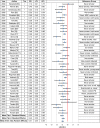
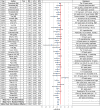

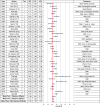
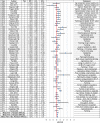
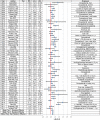
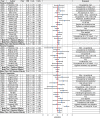

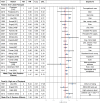
Similar articles
-
The risk of Parkinson's disease with exposure to pesticides, farming, well water, and rural living.Neurology. 1998 May;50(5):1346-50. doi: 10.1212/wnl.50.5.1346. Neurology. 1998. PMID: 9595985
-
Environmental risk factors and Parkinson's disease: a metaanalysis.Environ Res. 2001 Jun;86(2):122-7. doi: 10.1006/enrs.2001.4264. Environ Res. 2001. PMID: 11437458
-
Pesticide exposure and risk of Parkinson's disease: a family-based case-control study.BMC Neurol. 2008 Mar 28;8:6. doi: 10.1186/1471-2377-8-6. BMC Neurol. 2008. PMID: 18373838 Free PMC article.
-
Pesticide exposure and Parkinson's disease: epidemiological evidence of association.Neurotoxicology. 2012 Oct;33(5):947-71. doi: 10.1016/j.neuro.2012.05.011. Epub 2012 May 22. Neurotoxicology. 2012. PMID: 22627180 Review.
-
Onset and progression factors in Parkinson's disease: A systematic review.Neurotoxicology. 2017 Jul;61:132-141. doi: 10.1016/j.neuro.2016.04.003. Epub 2016 Apr 5. Neurotoxicology. 2017. PMID: 27058967 Review.
Cited by
-
Mortality from Parkinson's disease and other causes among a workforce manufacturing paraquat: an updated retrospective cohort study.J Occup Med Toxicol. 2021 May 27;16(1):20. doi: 10.1186/s12995-021-00309-z. J Occup Med Toxicol. 2021. PMID: 34044863 Free PMC article.
-
Environmental Enrichment Attenuates Oxidative Stress and Alters Detoxifying Enzymes in an A53T α-Synuclein Transgenic Mouse Model of Parkinson's Disease.Antioxidants (Basel). 2020 Sep 28;9(10):928. doi: 10.3390/antiox9100928. Antioxidants (Basel). 2020. PMID: 32998299 Free PMC article.
-
Gut Inflammation in Association With Pathogenesis of Parkinson's Disease.Front Mol Neurosci. 2019 Sep 13;12:218. doi: 10.3389/fnmol.2019.00218. eCollection 2019. Front Mol Neurosci. 2019. PMID: 31572126 Free PMC article. Review.
-
Systematic replication of smoking disease associations using survey responses and EHR data in the All of Us Research Program.J Am Med Inform Assoc. 2023 Dec 22;31(1):139-153. doi: 10.1093/jamia/ocad205. J Am Med Inform Assoc. 2023. PMID: 37885303 Free PMC article.
-
Mortality and causes of death in patients with Parkinson's disease: a nationwide population-based cohort study.Front Neurol. 2023 Aug 31;14:1236296. doi: 10.3389/fneur.2023.1236296. eCollection 2023. Front Neurol. 2023. PMID: 37719757 Free PMC article.
References
-
- Parkinson J. An essay on the shaking palsy. J Neuropsychiatry Clin Neurosci. 2002;14(2):223–36. Epub 2002/05/02. . - PubMed
-
- Ascherio A, Weisskopf MG, O'Reilly EJ, McCullough ML, Calle EE, Rodriguez C, et al. Coffee consumption, gender, and Parkinson's disease mortality in the cancer prevention study II cohort: the modifying effects of estrogen. Am J Epidemiol. 2004;160(10):977–84. Epub 2004/11/04. 10.1093/aje/kwh312 . - DOI - PubMed
-
- Klein C. Genetics of Parkinson's disease—An overview In: Fahn S, Lang AE, Schapira AHV, editors. Movement Disorders 4 Philadelphia: Saunders/Elsevier; 2010. p. 15–39.
Publication types
MeSH terms
Substances
Grants and funding
LinkOut - more resources
Full Text Sources
Other Literature Sources
Medical

